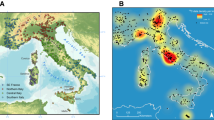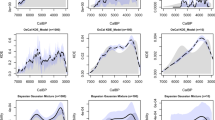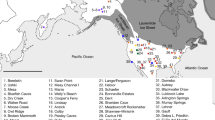Abstract
Observations of continuities and discontinuities in the archaeological record depend in important ways on the spatial and temporal scale at which we make the observations, which are in turn affected by the observational tools we have available. Nowhere is this more important than in matters of chronological resolution and its impact on our sense of stability and change. But theoretical considerations are also relevant and specific theoretical positions and observational tools tend to go together. A variety of new methods have made it possible to attain levels of chronological resolution not previously accessible and also to obtain information about aspects of past societies that were not previously available, such as the genetic make-up of their members. These developments have undermined the long-standing view in Anglo-American archaeology that change is gradual and autonomous and are leading to a view of the past that is much more dynamic. The implications of these new developments are examined in relation to the demographic patterns of the European Neolithic. It is argued that demographic fluctuations—‘boom-bust’ patterns—play a key role in accounting for patterns of cultural change over the course of the Neolithic and that a variety of methods can inform on them, including the use of summed radiocarbon probability distributions, which have the advantage that the information to construct them is very widely available. Given the speed with which demographic processes operate, it is important that the temporal resolution of our methods is sufficient to characterise the patterns that result from them. While the demographic patterns are becoming clearer, much more work needs to be done to understand the cultural, social and economic processes at work following regional collapse in populations, where this does not simply lead to reoccupation by new groups from elsewhere.




Similar content being viewed by others
References
Ammerman, A. J., & Cavalli-Sforza, L. L. (1971). Measuring the rate of spread of early farming in Europe. Man (NS), 6, 674–688.
Bayliss, A. & Whittle, A. eds (2007) Histories of the dead: building chronologies for five southern British long barrows. Cambridge Archaeological Journal, 17, Supplement S1.
Bradley, R. (1978). The prehistoric settlement of Britain. London: Routledge & Kegan Paul.
Bramanti, B., Thomas, M. G., Haak, W., Unterlaender, M., Jores, P., Tambets, K., et al. (2009). Genetic discontinuity between local hunter–gatherers and Central Europe’s first farmers. Science, 326, 137–140.
Collard, M., Edinborough, K., Shennan, S. J., & Thomas, M. G. (2010). Radiocarbon evidence indicates that migrants introduced farming to Britain. Journal of Archaeological Science, 37, 866–870.
Davison, K., Dolukhanov, P., Sarson, G. R., & Shukurov, A. (2006). The role of waterways in the spread of the Neolithic. Journal of Archaeological Science, 33, 641–652.
Dörfler, W. (2008). Das dritte vorchristliche Jahrtausend in hochauflösenden Pollendiagrammen aus Norddeutschland. In J. Müller & W. Dörfler (Eds.), Umwelt – Wirtschaft – Siedlungen im dritten vorchristlichen Jahrtausend Mitteleuropas und Südskandinaviens (pp. 135–148). Neumünster: Wachholtz.
Gamba, C., et al. (2012). Ancient DNA from an Early Neolithic Iberian population supports a pioneer colonization by first farmers. Molecular Ecology, 21, 45–56.
Gamble, C., Davies, W., Pettitt, P., Hazelwood, L., & Richards, M. (2005). The archaeological and genetic foundations of the European population during the Late Glacial: implications for ‘agricultural thinking’. Cambridge Archaeological Journal, 15, 193–223.
Gronenborn, D. (2010). Climate, crises and the “neolithisation” of Central Europe between IRD-events 6 and 4. In D. Gronenborn & J. Petrasch (Eds.), The Spread of the Neolithic to Central Europe (pp. 61–80). Mainz: Römisch-Germanisches Zentralmuseum.
Hinz, M., Feeser, I., Sjögren, K. G., & Müller, J. (2012). Demography and the intensity of cultural activities: an evaluation of Funnel Beaker Societies (4200–2800 cal BC). Journal of Archaeological Science, 39, 3331–3340.
Kohler, T. A., Cole, S., & Ciupe, S. M. (2009). Population and warfare: a test of the turchin model in Puebloan societies. In S. Shennan (Ed.), Pattern and Process in Cultural Evolution (pp. 277–295). Berkeley: University of California Press.
Linderholm, A. (2008). Migration in prehistory: DNA and stable isotope analyses of Swedish skeletal material. Stockholm: Stockholm University.
Malmström, H., Gilbert, T., Thomas, M. G., Brandström, M., Storå, J., Molnar, P., et al. (2009). Ancient DNA reveals lack of continuity between neolithic hunter-gatherers and contemporary Scandinavians. Current Biology, 19, 1–5. doi:10.1016/j.cub.2009.09.017.
Müller, J. (2008). Siedlungs- und umweltarchäologische Modelle zum 3. Jahrtausend v. Chr. In J. Müller & W. Dörfler (Eds.), Umwelt – Wirtschaft – Siedlungen im dritten vorchristlichen Jahrtausend Mitteleuropas und Südskandinaviens (pp 393–9). Wachholtz: Neumünster.
Munoz, S. E., Gajewski, K., & Peros, M. C. (2010). Synchronous environmental and cultural change in the prehistory of the northeastern United States. Proceedings of the National Academy of Sciences USA, 107, 22008–22013.
Peros, M. C., Munoz, S. E., Gajewski, K., & Viau, A. E. (2010). Prehistoric demography of North America inferred from radiocarbon data. Journal of Archaeological Science, 37, 656–664.
Pétrequin, P. (1997). Management of architectural woods and variations in population density in the fourth and third millennia BC (Lakes Chalain and Clairvaux, Jura, France). Journal of Anthropological Archaeology, 15, 1–19.
Pinhasi, R., Thomas, M. G., Hofreiter, M., Currat, M., & Burger, J. (2012). The genetic history of Europeans. Trends in Genetics. doi:10.1016/j.tig.2012.06.006.
Renfrew, C. (1987). Archaeology and language. London: Jonathan Cape.
Richerson, P. J., Boyd, R., & Bettinger, R. L. (2001). Was agriculture impossible during the Pleistocene but mandatory during the Holocene? A climate change hypothesis. American Antiquity, 66, 387–411.
Rick, J. W. (1987). Dates as data: an examination of the Peruvian pre-ceramic radiocarbon record. American Antiquity, 52, 55–73.
Rösch, M. (1993). Prehistoric landuse as recorded in a lakeshore core at Lake Constance. Vegetation History and Archaeobotany, 2, 213–232.
Roux, V. (2007). Ethnoarchaeology: a non historical science of reference necessary for interpreting the past. Journal of Archaeological Method and Theory, 14, 153–178.
Rowley-Conwy, P. A. (2012). North of the frontier: early domestic animals in Northern Europe. In: S. Colledge, J. Conolly, K. Dobney, K. Manning and S. Shennan (eds.) The origin and spread of stock-keeping in the near East and Europe. Walnut Creek: Left Coast Press (in press)
Shennan, S. J. (2000). Population, culture history and the dynamics of culture change. Current Anthropology, 41, 811–835.
Shennan, S. J. (2008). Population processes and their consequences in early Neolithic Europe. In J. P. Bocquet-Appel & O. Bar-Yosef (Eds.), The Neolithic demographic transition and its consequences (pp. 315–329). Heidelberg: Springer.
Shennan, S., & Edinborough, K. (2007). Prehistoric population history: from the Late Glacial to the late Neolithic in central and northern Europe. Journal of Archaeological Science, 34, 1339–1345.
Sherratt, A. (1972). Socio-economic and demographic models for the Neolithic and Bronze Age of Europe. In D. L. Clarke (Ed.), Models in archaeology (pp. 477–542). London: Methuen.
Skoglund, P., et al. (2012). Origins and genetic legacy of Neolithic farmers and hunter-gatherers in Europe. Science, 336, 466–469.
Surovell, T. A., Byrd Finley, J., Smith, G. M., Brantingham, P. J., & Kelly, R. (2009). Correcting temporal frequency distributions for taphonomic bias. Journal of Archaeological Science, 36, 1715–1724.
Tallavaara, M., Pesonen, P., & Oinonen, M. (2010). Prehistoric population history in eastern Fennoscandia. Journal of Archaeological Science, 37, 251–260.
Turchin, P., & Nefedov, S. A. (2009). Secular cycles. Princeton: Princeton University Press.
Whittle, A., Healy, F., & Bayliss, A. (2011). Gathering time: dating the early neolithic enclosures of Southern Britain and Ireland. Oxford: Oxbow.
Williams, A. N. (2012). The use of summed radiocarbon probability distributions in archaeology: a review of methods. Journal of Archaeological Science, 39, 578–589.
Zimmermann, A. (1995). Austauschsysteme von Silexartefakten in der Bandkeramik Mitteleuropas. (Universitätsforschungen zur Prähistorischen Archäologie 26). Bonn: Habelt.
Zimmermann, A. (2002). Landschaftsarchäologie I Die Bandkeramik auf der Aldenhovener Platte. Bericht der Romisch-Germanischen Kommission, 2002, 17–38.
Zimmermann, A., Hilpert, J., & Wendt, K. P. (2009). Estimations of population density for selected periods between the Neolithic and AD 1800. Human Biology, 81, 357–380.
Author information
Authors and Affiliations
Corresponding author
Rights and permissions
About this article
Cite this article
Shennan, S. Demographic Continuities and Discontinuities in Neolithic Europe: Evidence, Methods and Implications. J Archaeol Method Theory 20, 300–311 (2013). https://doi.org/10.1007/s10816-012-9154-3
Published:
Issue Date:
DOI: https://doi.org/10.1007/s10816-012-9154-3




